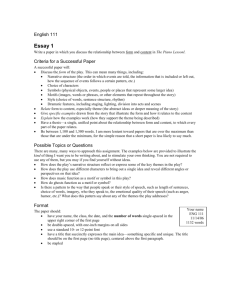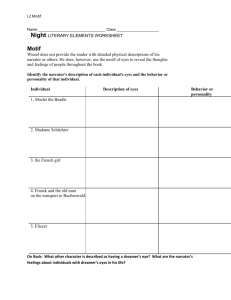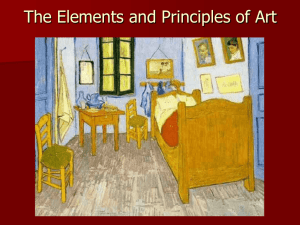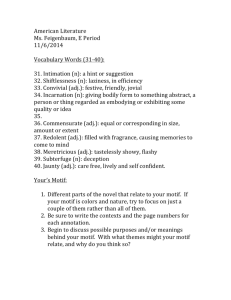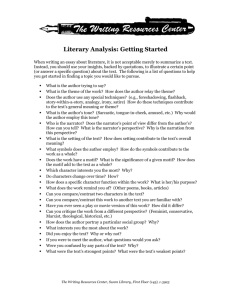Exploring Sound – Developing a Motif Third/
advertisement
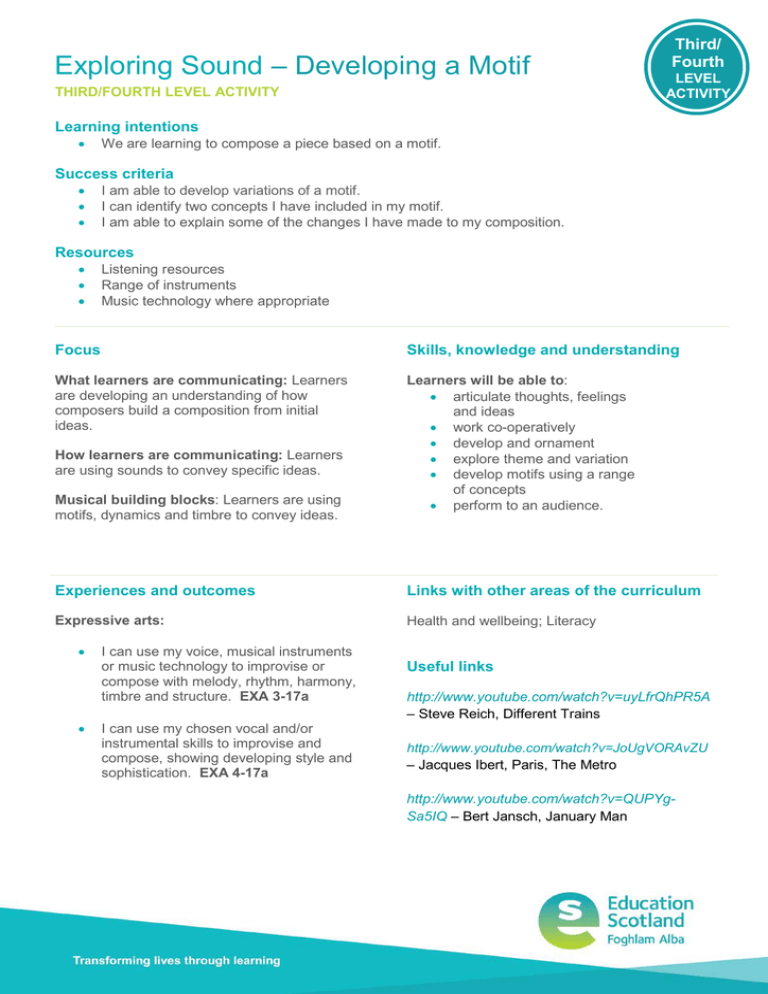
Exploring Sound – Developing a Motif THIRD/FOURTH LEVEL ACTIVITY Third/ Fourth LEVEL ACTIVITY Learning intentions • We are learning to compose a piece based on a motif. Success criteria • • • I am able to develop variations of a motif. I can identify two concepts I have included in my motif. I am able to explain some of the changes I have made to my composition. Resources • • • Listening resources Range of instruments Music technology where appropriate Focus Skills, knowledge and understanding What learners are communicating: Learners are developing an understanding of how composers build a composition from initial ideas. Learners will be able to: • articulate thoughts, feelings and ideas • work co-operatively • develop and ornament • explore theme and variation • develop motifs using a range of concepts • perform to an audience. How learners are communicating: Learners are using sounds to convey specific ideas. Musical building blocks: Learners are using motifs, dynamics and timbre to convey ideas. Experiences and outcomes Links with other areas of the curriculum Expressive arts: Health and wellbeing; Literacy • • I can use my voice, musical instruments or music technology to improvise or compose with melody, rhythm, harmony, timbre and structure. EXA 3-17a I can use my chosen vocal and/or instrumental skills to improvise and compose, showing developing style and sophistication. EXA 4-17a Useful links http://www.youtube.com/watch?v=uyLfrQhPR5A – Steve Reich, Different Trains http://www.youtube.com/watch?v=JoUgVORAvZU – Jacques Ibert, Paris, The Metro http://www.youtube.com/watch?v=QUPYgSa5IQ – Bert Jansch, January Man • • I can use music technology to compose, record and produce music and to enhance performance. EXA 4-17b https://www.youtube.com/watch?v=u6LyYdSQQ AQ – Schoenberg Pierrot lunaire no. 8 Nacht Having developed my ideas from a range of stimuli, I can create and present compositions using a broad range of musical concepts and ideas. EXA 4-18a Process/next steps 1) Working individually, young people will compose and notate a motif. Encourage young people to think freely about rhythm and to develop their own scale or use a pre-existing scale or mode as a basis for their motif. (The Further Ideas document provides some starting points). 2) To develop the motif, young people may consider using the following techniques: • Begin to change the rhythmic values or size of intervals. • Create an ornament. • Reorder notes of the motif (Schoenberg’s Verklärte Nacht provides a good example). • Explore theme and variation with the motif. Other concepts may be more suitable for individual learners. 3) In addition to the suggested operations, encourage students to listen to their phrases develop and extend ideas organically. They will begin to select, organise and layer phrases into the finished pieces. 4) This activity would work well as a solo piece or possibly for an ensemble. 5) Young people should have the opportunity to perform their music to the class through a live performance or presenting a recording. 6) As further development, young people could begin notate on transcript and then transpose the motif.
